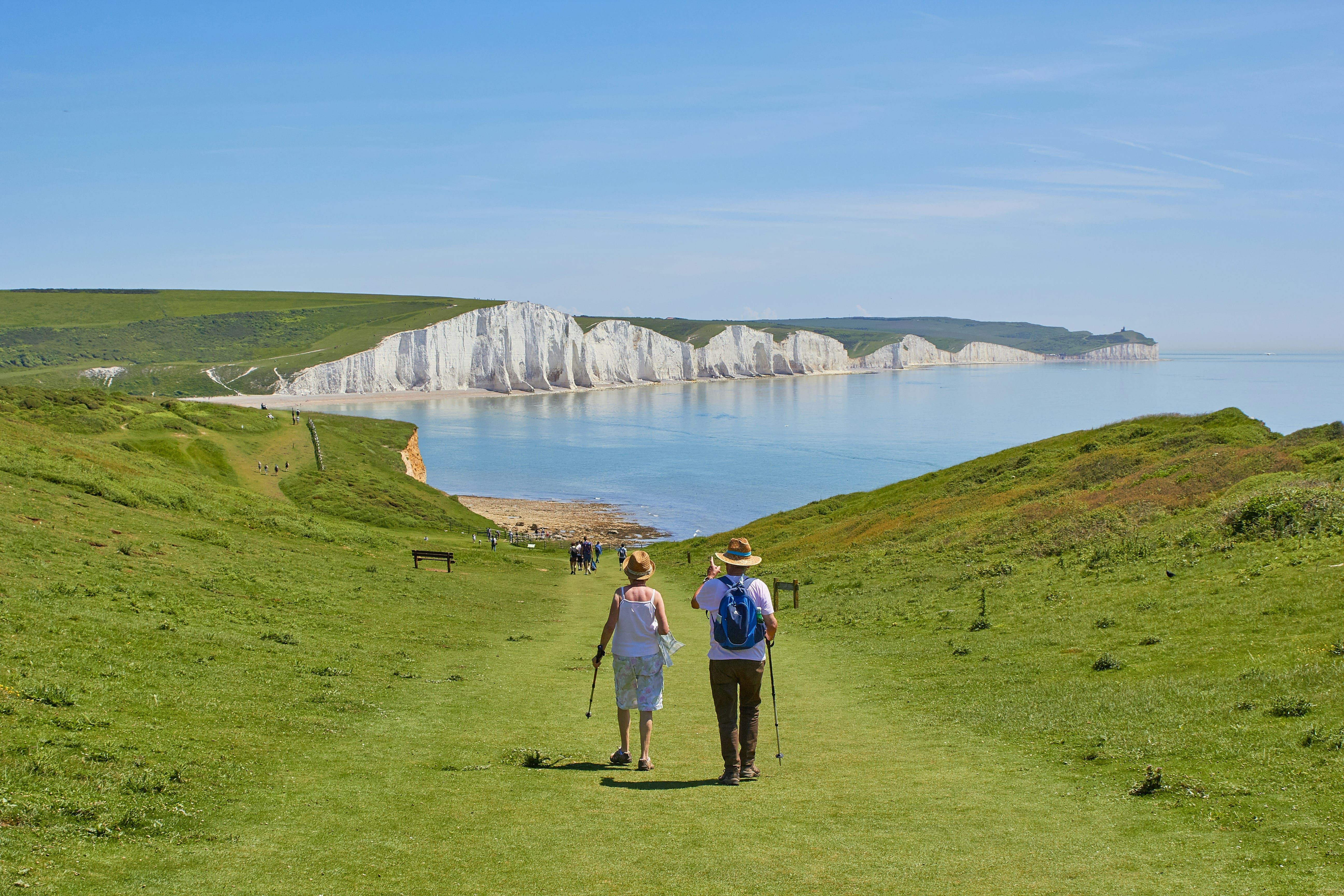Maximizing Your 401(k): Can I Add More Money to My Retirement Savings?
Learn how to maximize your 401(k) contributions to ensure a comfortable retirement. This guide covers everything from contribution limits and tax advantages to employer matching and catch-up contributions, helping you make informed decisions for your financial future.
Abhinil Kumar
Author

Imagine you’re sitting at your desk, enjoying your morning coffee, when you receive an email from HR about making changes to your 401(k) contributions. You’ve been contributing steadily, but now you’re wondering, “Can I add more money to my 401(k)?” The answer is yes, and this guide will walk you through everything you need to know about maximizing your 401(k) contributions, ensuring a comfortable retirement.
The Importance of Saving for Retirement
Saving for retirement is crucial for financial security in later years. As individuals age, they may face increased healthcare costs and decreased earning potential, making it even more important to have sufficient funds saved. Additionally, retirement lifestyle choices, such as where one lives and the activities they engage in, can also impact the amount of money needed for a comfortable retirement.
Saving for retirement is particularly important for maintaining good health. As individuals age, they are more likely to experience health issues that require medical treatment and long-term care. These expenses can be quite costly and can quickly deplete savings if not properly planned for. Having a substantial retirement savings can provide a safety net for these unexpected expenses and ensure that individuals are able to access the care they need without financial burden.
Furthermore, the amount of income and financial security provided by having $1 million saved for retirement can greatly alleviate concerns. With a 5% interest rate, this amount can provide a steady stream of income that can supplement other retirement income sources like Social Security. It can also provide a sense of security, knowing that there is a significant nest egg that can be relied upon for day-to-day expenses and emergencies.
When determining how much to save for retirement, several factors should be considered. These include the age at which one plans to retire, as starting savings early allows for more time to accumoulate funds and potentially earn higher returns. The desired income replacement is also crucial, as this determines the lifestyle one aims to maintain after retiring. Reliance on Social Security benefits, which may not be sufficient to fully cover living expenses, should also be taken into account. Finally, employer matching contributions, if available, can significantly boost retirement savings and should not be overlooked.
A wise approach to retirement savings is to start with a lower contribution and gradually increase it over time. This allows individuals to adjust to the reduction in take-home pay and gradually build up their savings without feeling too much financial strain. It also enables them to take advantage of the power of compounding, where earnings on investments are reinvested to generate even more returns over time.
Overview of the 401(k) Retirement Savings Plan
A 401(k) retirement savings plan is a popular tool offered by many employers to help employees save for retirement. Contributions are made on a pre-tax basis, lowering taxable income. The money in a 401(k) can be invested in various options, such as stocks, bonds, and mutual funds, potentially growing over time. Many employers also offer matching contributions, significantly boosting overall savings.
Contribution Limits for 401k plans
Contribution limits refer to the maximum amount an individual can contribute to their 401(k) account each year. These limits are established by the IRS and are subject to change annually. For 2022, the employee contribution limit is $20,500, with an additional $6,500 allowed for those aged 50 and older.
Contribution limits for 401(k) plans are set by the IRS each year. In 2024, the maximum employee contribution limit is $23,000 ($22,500 in 2023, $20,500 in 2022, $19,500 in 2021 and 2020; and $19,000 in 2019). Individuals aged 50 and over can make additional catch-up contributions of up to $6,500, bringing their total potential contribution to $27,000.
Employers can also make contributions to employees’ 401(k) accounts, typically up to 25% of an employee’s compensation or $61,000, whichever is less. Taking full advantage of these limits can significantly enhance retirement savings.
Annual contribution limits set by the IRS
The Internal Revenue Service (IRS) is responsible for setting annual contribution limits that dictate the maximum amount individuals can contribute to various savings and investment vehicles. These contribution limits play a crucial role in determining the tax advantages and benefits associated with different saving strategies. By understanding the IRS’s annual contribution limits, individuals can make informed decisions about their financial planning and take full advantage of the tax incentives available to them. In this article, we will provide an explanation of the annual contribution limits set by the IRS and explore their significance in different saving and investment options.
Retirement Accounts
Retirement Accounts offer individuals a variety of options to save and invest their money for their golden years. Two popular types of retirement accounts are Individual Retirement Accounts (IRAs) and employer-sponsored plans like 401(k)s.
IRAs are flexible accounts that allow individuals to contribute a certain amount of money each year, depending on their age and income. They offer tax advantages such as tax-deductible contributions for traditional IRAs or tax-free growth for Roth IRAs. IRAs can be self-directed, meaning individuals have control over how their funds are invested, giving them the opportunity to choose from a wide range of investment options based on their risk tolerance and goals.
On the other hand, employer-sponsored plans like 401(k)s are retirement accounts offered by companies to their employees. These plans are funded through automatic payroll deductions, making it easy for individuals to consistently save for their retirement. Additionally, many employers offer matching contributions, which is essentially free money towards an employee’s retirement savings. The contributions made to 401(k)s are tax-deferred until withdrawn, providing potential tax advantages.
Both IRA and 401(k) accounts are designed to help individuals save for retirement by offering various tax benefits. These accounts provide individuals with an opportunity to grow their savings over time and potentially benefit from compound interest. Considering the potential tax advantages and the importance of saving for retirement, it is wise for individuals to explore and take full advantage of these retirement accounts.
Different types of retirement accounts4
When planning for retirement, it is important to consider the different types of retirement accounts available. Two of the most common options are:
- Individual Retirement Accounts (IRAs)
- 401(k) plans
IRAs are popular among individuals who want more investment choices. Unlike 401(k) plans, which are typically offered by employers, IRAs allow individuals to choose from a wider range of investment options, such as stocks, bonds, mutual funds, and real estate. This flexibility can be advantageous for those who want more control over their investments.
Additionally, IRAs also allow individuals to contribute up to the annual maximum, which can vary based on age and income level. This means that individuals can potentially save more for retirement, maximizing their potential for growth over time.
When considering a rollover from a 401(k) plan to an IRA, it is important to contact the new account institution for specific instructions. Each institution may have different procedures, so following their guidelines carefully is essential to ensure a smooth transfer of funds.
Key Differences Between IRAs and 401(k) Plans:
- Sponsorship and Availability:
- IRAs: Individual accounts opened and managed by the individual.
- 401(k) Plans: Employer-sponsored accounts with contributions through payroll deductions.
- Investment Choices:
- IRAs: Wide range of investment options, including stocks, bonds, mutual funds, and real estate.
- 401(k) Plans: Limited to investment options provided by the employer’s plan, usually mutual funds and similar products.
- Contribution Limits:
- IRAs: Annual contribution limits vary based on age and income level.
- 401(k) Plans: Higher annual contribution limits compared to IRAs, with additional catch-up contributions allowed for those aged 50 and over.
- Employer Contributions:
- IRAs: No employer contributions.
- 401(k) Plans: Potential for employer matching contributions, enhancing the employee’s savings.
- Tax Benefits:
- IRAs: Contributions may be tax-deductible depending on income level and participation in other retirement plans.
- 401(k) Plans: Contributions are made with pre-tax dollars, reducing taxable income for the year.
When considering a rollover from a 401(k) plan to an IRA, it is important to contact the new account institution for specific instructions. Each institution may have different procedures, so following their guidelines carefully is essential to ensure a smooth transfer of funds.

Maximizing Your 401(k)
Benefits of Contributing to a 401(k) Account
Contributing to a 401(k) account offers numerous benefits:
- Tax Advantages: One of the main benefits of contributing to a 401k account is the tax advantages it offers. Traditional 401k contributions are made with pre-tax dollars, meaning they are deducted from the individual’s paycheck before taxes are applied. This reduces the individual’s taxable income, potentially lowering their overall tax liability. In addition, the earnings on investments within the 401k account grow tax-deferred until retirement, allowing for potential long-term growth without the burden of immediate taxes. Ultimately, contributing to a 401k account can provide individuals with substantial tax benefits, helping them save more for retirement.
- Employer Contributions: Many employers offer 401k matching contributions, wherein the employer matches a portion of the employee’s contributions up to a certain percentage. This employer match is essentially free money that boosts the individual’s retirement savings. By taking advantage of these contributions, individuals can accelerate their retirement savings and make the most of their employer’s generosity. It is important to note that employer contributions often have vesting schedules, meaning employees may need to work for the company for a certain period of time to become fully vested in these contributions.
- Financial Security: Contributing to a 401k account allows individuals to build a solid foundation for their financial security in retirement. By consistently saving a portion of each paycheck, individuals can accumulate funds that will serve as a safety net during their later years. This financial security can provide peace of mind and alleviate concerns about insufficient funds to cover basic living expenses once regular employment income ceases.
- Flexibility and Access: While 401k accounts are primarily designed for retirement savings, they do offer flexibility and potential access to funds in certain circumstances. Some plans allow for loans or hardship withdrawals, providing individuals with a means to access money in emergency situations. However, it is important to carefully consider the implications of such withdrawals, including potential tax penalties and the depletion of retirement savings. Nevertheless, the flexibility afforded by 401k accounts can offer individuals a safety net during unexpected or challenging times.
Employer Match
An employer match in a 401(k) plan is a valuable benefit that can significantly impact an individual’s retirement savings. It occurs when an employer contributes money to an employee’s 401(k) account based on the employee’s contribution. Maximizing an employer match is essential to take full advantage of this benefit and boost retirement savings.
To maximize an employer match, an employee needs to contribute enough to meet the required contribution percentage set by the employer. Employers often match a certain percentage of an employee’s salary, usually up to a specific maximum amount. For example, a common matching formula is 50% of the employee’s contribution up to 6% of their salary. In this case, if the employee contributes 6% of their salary to their 401(k), the employer will contribute an additional 3%.
The benefits of taking advantage of an employer match are twofold. Firstly, it provides an opportunity to receive free money for retirement savings. The employer match effectively acts as a bonus or additional compensation. Secondly, it helps increase retirement savings at an accelerated rate. By maximizing the employer match and contributing more to the 401(k) plan, an individual can potentially accumulate a larger retirement fund over time.
Catch-Up Contribution
Catch-up contributions allow individuals aged 50 or older to contribute additional funds beyond the standard limits. For 401(k) plans in 2022, the catch-up contribution limit is $6,500, allowing a total contribution of $27,000 for those eligible.
Conclusion
Adding money to your 401(k) is a smart financial move that can significantly impact your retirement savings. By understanding the importance of saving for retirement, the benefits of a 401(k) plan, contribution limits, and the impact of employer match and catch-up contributions, you can make informed decisions about your retirement planning. Taking advantage of tax-deferred growth, employer matching, and maximizing your contributions will help you build a substantial retirement nest egg. Regularly reviewing your plan, understanding the rules, and consulting with a financial planner can ensure you are on track to meet your retirement goals. Remember, every dollar you add to your 401(k) today brings you one step closer to a secure and comfortable retirement.
FAQs
- Can I add money to my 401(k) beyond the annual limit Excess Contributions: No, you cannot exceed the annual contribution limits set by the IRS. For 2022, the limit is $20,500 for individuals under 50 and $27,000 for those 50 and older with catch-up contributions. Exceeding these limits can result in tax penalties and corrective measures.
- How does my annual income affect my 401(k) contributions? Annual Income: Your annual income determines the percentage of your salary you can contribute to your 401(k). Higher income allows for larger contributions, but you must still adhere to IRS limits. Employers may also set limits based on your salary.
- What are the benefits of employer match in a 401(k) plan? Employer Match: Employer match is a significant benefit where your employer matches a portion of your contributions, effectively boosting your retirement savings. It’s essentially free money that enhances your investment returns and accelerates your retirement fund growth.
- Can I roll over my 401(k) from a previous employer to a new plan? Direct Rollover: Yes, you can perform a direct rollover from your previous employer’s 401(k) to your new employer’s plan or an IRA. This process is tax-free if done correctly and helps consolidate your retirement savings, making it easier to manage and potentially reducing fees.
- How do tax brackets influence my 401(k) contributions? Tax Bracket: Contributions to a traditional 401(k) are made pre-tax, reducing your taxable income and potentially lowering your tax bracket. This can result in significant tax savings, allowing you to save more for retirement. In contrast, Roth 401(k) contributions are made after-tax, but withdrawals in retirement are tax-free.
- What happens if I make excess contributions to my 401(k)? Excess Contributions: If you contribute more than the IRS limit, you must notify your plan administrator. Excess contributions need to be withdrawn by April 15th of the following year to avoid double taxation — first as income and then as a penalty.


